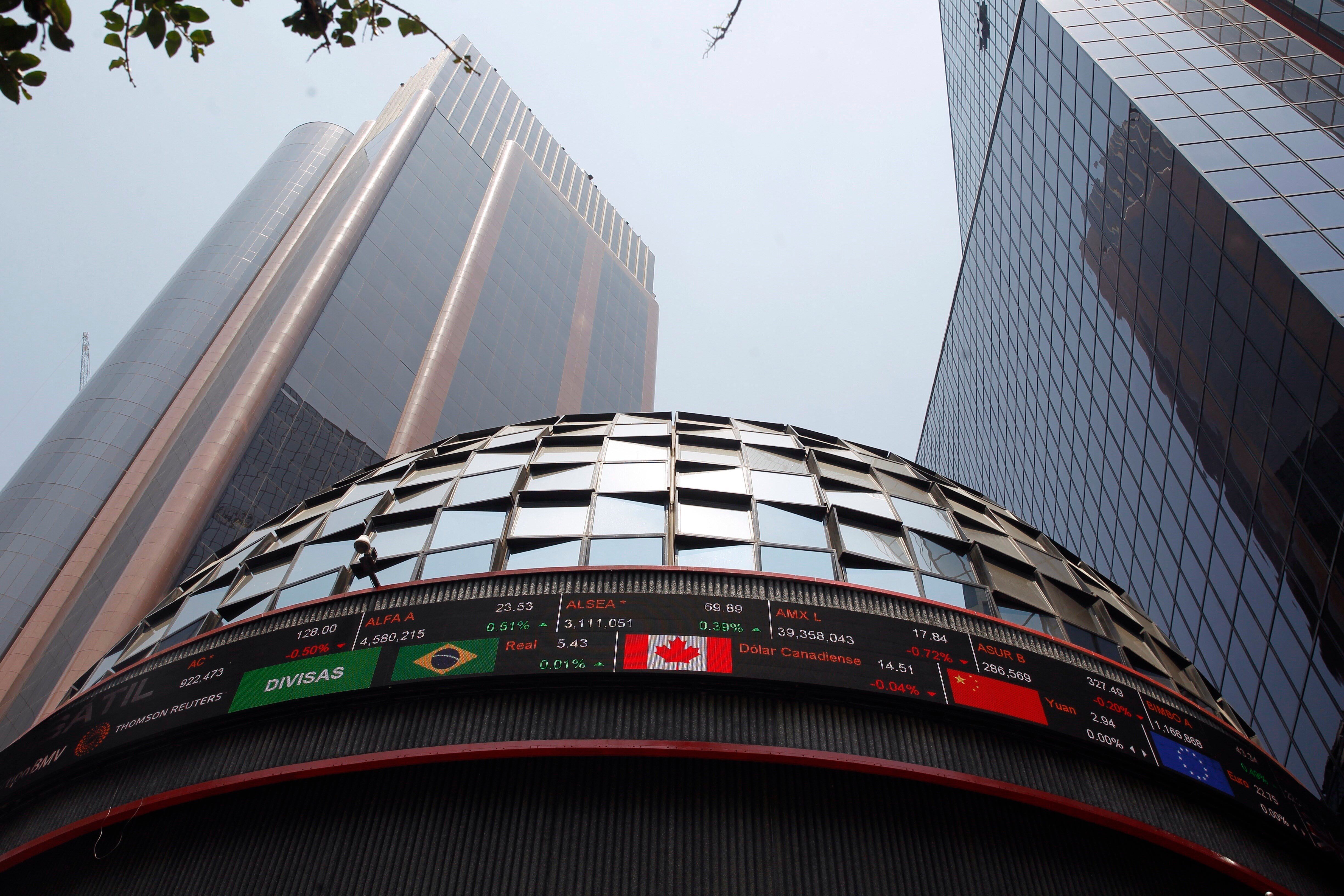
The Mexican Stock Exchange (BMV) continues its good run. And it is that at the close of the day on Tuesday, March 29, it advanced by 0.77% in its main indicator, to 56,111.21 points, which represents a close with a new all-time high.
The Price and Quotes Index (CPI), the BMV's main indicator, “recorded an advance of 0.77% in the session, registering a historic close of 56,111.21 points,” Banco Base analyst Alfredo Sandoval explained to Efe.
In addition, during the session, the CPI reached an intraday record high of 56,276.39 points.

Within the CPI, 25 of the 35 companies that make up the index showed gains, “highlighting the increases in share prices of the Mexican Stock Exchange (+4.40%), Quálitas (+4.33%), Corporativa Inmobiliaria Vesta (+4.27%) and Kimberly-Clark of Mexico (+4.04%),” Sandoval explained.
The Mexican peso appreciated 0.15% against the dollar, trading at 19.95 units per greenback on the interbank market.
The CPI closed at 56 thousand 111.24 units with a gain of 426.07 points and a positive variation of 0.77% compared to the previous session.
The volume traded on the market reached 321.81 million securities for an amount of 23,095 million pesos.
Of the 792 companies listed on the day, 512 ended up with their prices rising, 248 had losses and 32 closed unchanged.

The securities with the greatest increase were held by the financial intermediary Credito Real (CREAL), with 15.19%; the construction and infrastructure company Grupo Mexicano de Desarrollo (GMD), with 7.76%, and the land transport logistics group Traxion (TRAXION A), with 6.82%.
In contrast, the titles with the greatest downward variation were from the health services company Médica Sur (MEDICA B), with -2.81%; the Maxcom Telecomunicaciones company (MAXCOM A) with -2.63%, and the mining company Industrias Peñoles (PEÑOLES), with -2.52%.
During the day, all sectors won, starting with frequent consumption (1.86%), followed by finance (1.28%), industrial (0.73%) and materials (0.09%).
At the start of operations on Tuesday, the Mexican Stock Exchange began with slight preliminary declines of 0.25% which placed it at 55,548.36 points, but later showed a recovery of 0.18 percent, by the end of the day, ending with a significant advance of 0.77%.

A stock market index is an indicator used to know the evolution of the price of a set of assets, for which it takes data from different companies or sectors of a segment of the market.
These indicators are used mainly by the stock exchanges of countries and each of them can be integrated by firms with specific characteristics such as having a similar market capitalization or belonging to the same industry, also, there are some indices that only take into account a handful of shares to determine their value or others that consider hundreds of shares.
Stock indices serve as an indicator of confidence in the stock market, business confidence, the health of the national and global economy, and the performance of investments in shares and shares of a company. Generally, if investors are not confident, equity costs would tend to fall.
They also work to measure the performance of an asset manager and allow a comparison between return and risk; measure the opportunities of a financial asset; or create portfolios.

Each stock index has its own way of being measured, but the main factor is the market capitalization of each firm that integrates it. This is obtained by multiplying the value of the day of the bond on the corresponding exchange by the total number of shares that are in circulation in the market.
Companies on the stock exchange are obliged to submit a balance sheet of their composition. This report should be published every three or six months, as the case may be.
Reading a stock market index also involves taking care of its alterations over time. Current indices always open with a fixed value based on stock prices on their start date, but not all of them follow this method. Therefore, it can be a source of equivocation.
If one index totals 500 points in a day, while another only adds 20, it might seem that the first one performed better. However, if the first started the day at 30 thousand points, and the other at 300, it can be assumed that, in percentage terms, the gains for the second were more important.
With information from EFE
KEEP READING:
Últimas Noticias
Debanhi Escobar: they secured the motel where she was found lifeless in a cistern

The oldest person in the world died at the age of 119

Macabre find in CDMX: they left a body bagged and tied in a taxi
The eagles of America will face Manchester City in a duel of legends. Here are the details

Why is it good to bring dogs out to know the world when they are puppies




